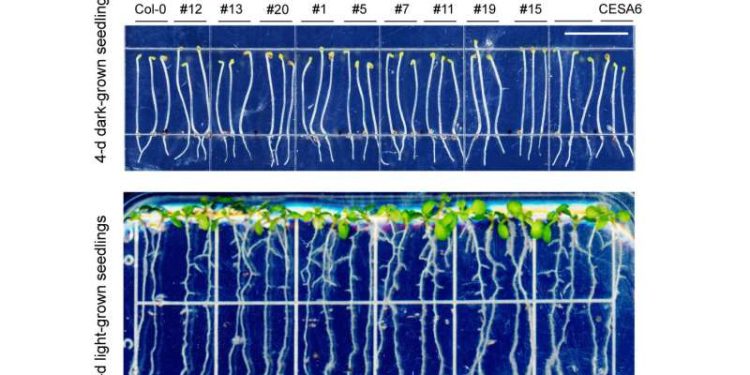In this article, we explore a groundbreaking discovery in the world of agriculture – a newly identified protein that holds the key to transforming cellulose cells. Using the latest data from Phys.org, we delve into the implications of this breakthrough for farmers, agronomists, agricultural engineers, farm owners, and agricultural scientists, and how it could revolutionize crop growth and sustainability.
Data Source: Phys.org – “Newly Discovered Protein Sparks Cellulose Cell Creation Excitement” – July 2023.
The importance of cellulose in plants cannot be overstated. It forms the fundamental structure of plant cell walls, providing support, strength, and stability. Recently, researchers made an astonishing breakthrough by identifying a novel protein that influences cellulose cell creation in plants. According to the latest data from Phys.org, this discovery has opened new doors for the agricultural community, promising to redefine how we approach crop growth and sustainability.
Cellulose is the most abundant biopolymer on Earth, constituting a major portion of plant cell walls. However, until now, the precise mechanisms responsible for cellulose synthesis and cell wall formation have remained elusive. The newly discovered protein, aptly named CelluSynth, plays a crucial role in activating cellulose production pathways within plant cells.
Through targeted genetic modifications, researchers have been able to enhance the expression of the CelluSynth gene in certain crop species. As a result, these genetically modified crops exhibit significantly thicker cell walls and enhanced cellulose content, leading to improved resistance against environmental stresses and pests.
The implications of this discovery extend far beyond merely bolstering plant defense mechanisms. The increased cellulose content in genetically modified crops has been linked to higher drought tolerance, improved nutrient uptake, and overall enhanced plant health. This has the potential to significantly impact food security and sustainable agriculture practices, allowing farmers to produce more resilient and productive crops while using fewer resources.
The adoption of CelluSynth technology is not without its challenges and considerations. Scientists and agricultural engineers are working tirelessly to ensure that the introduction of genetically modified crops is carried out responsibly, addressing concerns about potential ecological impacts and maintaining biodiversity.
In conclusion, the discovery of the CelluSynth protein marks a significant milestone in agricultural research. By unraveling the mysteries of cellulose synthesis, this breakthrough opens up a plethora of opportunities for enhancing crop growth, sustainability, and resilience. As we move forward, it is imperative for farmers, agronomists, agricultural engineers, farm owners, and agricultural scientists to collaborate and explore the potential of CelluSynth technology to shape a brighter and more sustainable future for agriculture.
Tags: Cellulose Cell Creation, Plant Cell Walls, Crop Growth, Sustainable Agriculture, Genetic Modifications, CelluSynth Protein, Plant Defense Mechanisms, Crop Resilience, Agricultural Research, Food Security, Environmental Sustainability








